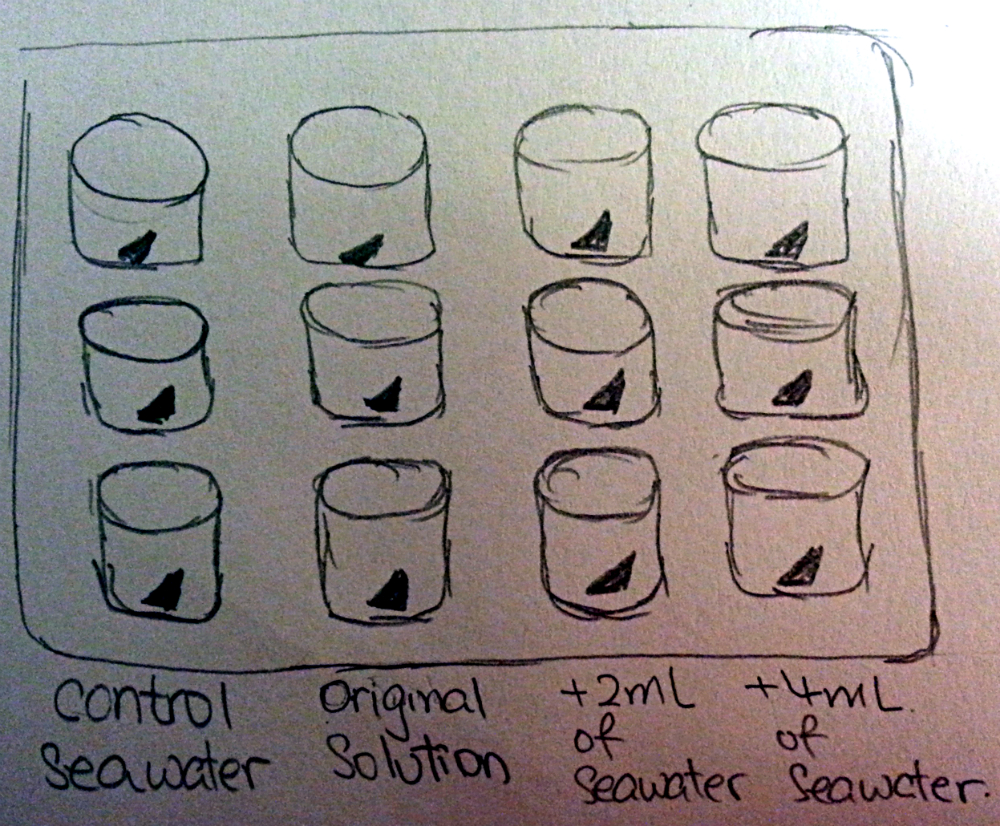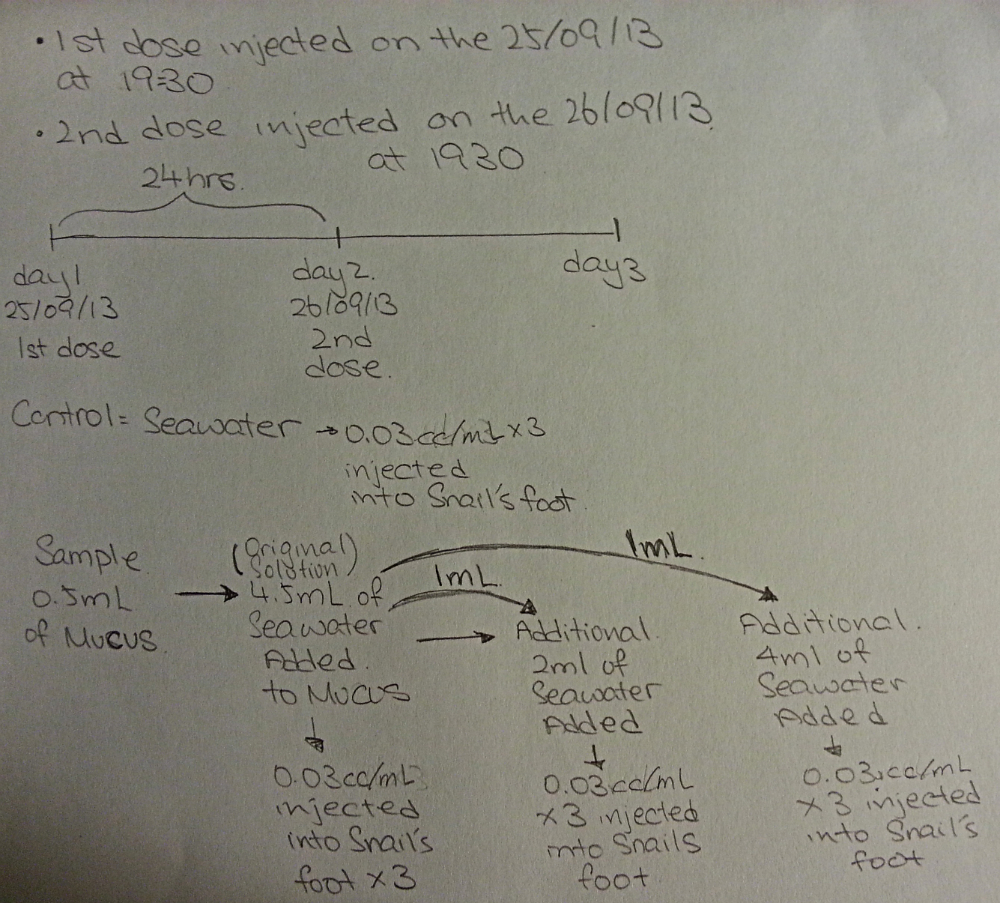 Toxicity (Experiment) Toxicity (Experiment) 
Introduction
All species under the genus of Palythoa can produce a deadly chemical call palytoxin, including Palythoa caesia. Palytoxin are generally exist in mucus and gonads (Borneman, 2004). Palytoxin was first observed in 1971 from a species of palythoa in Hawaii (Tubaro et.al., 2011). Indigenous people used this neuromuscular agent to tip spear for hunting (Borneman, 2004). The toxin has a very complex molecule structure, and it is know as the second most poisonous non-protein based toxic (Riobo & Franco, 2011). As palytoxin is a neurotoxin, they can paralyze prey animal and enemies by attacking the sodium-potassium channel, which is responsible for controlling the ionic balance that is important to cellular function (Na+/K+ -ATPase), crucially change these specialized channel into non-selective pores (Deeds et.al. 2010).
Palytoxin is widespread in the marine environment, importantly it can be found in the food chain including marine organism which preys on zoanthids or predators who prey on these creatures (fish, crabs, molluscs etc.). Human can be exposure to palytoxin in many way like eating seafood that contain palytoxin, inhalation of marine aerosols and dermal interaction with zoanthids. Palytoxin can affect the heart, muscles, and nerves leaving its victim in paralysis, which can be deadly to human and may be responsible for some of the human sickness (Tubaro et.al., 2011).
By 2013, many studies on the effect of palytoxin have been done on different animals (crabs, monkeys, dogs, rabbits, guinea pig, rats and mice) (Munday, 2011). However these studies are mainly base on palytoxin found in P.tuberculosa, P.caribeaorum, P.mammilosa, P.toxica (First observed), P.vestitus. As previous study mentioned all species of Palythoa contain palytoxin, however the toxicity of palytoxin found in P.caesia are not well study. This study aims to investigate and provide more information on the toxicity of palytoxin exist in P.caesia and the consequences of palytoxin poisoning.
Material & Method
Specimens collection
At least 7 individual colonies of Palythoa caesia were collected from the reef flat and outer slope of reef crest on the southside of Heron Island (23º27'S, 151º57'E); around Heron Island Research Station. Colonies were collected during reef walk at low tide in the morning on the 24th September 2013. Coral rubble or "live rock" that have Palythoa caesia colonies was collected by using hammer and chisel.
Gastropods, Planaxis sulcatus, were collected from the rock for experimental purpose as they are very abundant on and around Heron Island reef. All animals were released back to its natural habitat as no animal die or injured during this study.
1. Mucus
Stock solution : As palytoxin exist in the mucus of Palythoa caesia, mucus were scribe by using forceps or squeezed by hand with protective gloves on. A total of 0.5 ml of mucus were collected and put in a 10ml tube. Mucus were then store in the fridge for later use.
Working solution: Dilute stock 0.5ml mucus solution with 4.5ml of seawater to make working mucus solution (5ml).
2. Snail sample and setting
Snail study sample: 12 Planaxis sulcatus were used and each of them weighed around 4-4.5 g. And placed separately in different plastic container.
Setting: 12 snails were divided into 4 set, each set will have 3 replicates. Set 1: control group, Set 2: Working mucus solution, Set 3: Treatment 1 (+2ml), Set 4: Treatment 2 (+4ml).

Injection
-
Prepare 2 new 10ml tube, and 1ml of working mucus solution were added into each of the tube
-
For Treatment 1, add 2ml of seawater
-
For Treatment 2, add 4ml of seawater
-
Mix well, and place in the tube rack for later use
-
Each snail will be double dosed, a single dose are injected on the 25/09/2013 and the next single dose are injected 24 hours later.
-
Hold the snail upside down to allow access to the foot.
-
1cc/ml syringe fitted with a 30G needle were used to withdraw about 0.03cc/ml of solution. New set of 1cc/ml syringe and 30G needle should be used for each solution.
-
0.03cc/ml of solution in the syringe were then injected into the foot of the snail.
-
Snail were then placed back into its own plastic container.
-
24 hours later, 2nd dose were injected in the same snail, followed the same method as the 1st dose.
- Reaction of the snail were observed 24hrs after the 1st dose and 24 hrs after the second dose.

Result
The purpose of this study was to investigate the toxicity of palytoxin exist in P.caesia. The result of this study was not very significant as no snails were dead during the study period. However, the changes of snail’s fitness were observed. Snails injected with the working mucus solution (highest concentration of mucus) and with treatment 1 became less active and the foot of the snails were less sticky compare to the control snails (injected with pure seawater). Picture below show that the snails injected with seawater and treatment 2 crawl up to the top over the night, whereas the snails injected with working mucus solution and snails injected with treatment 1 tend to stay on the bottom. The result from the fitness change was not enough to draw a significant outcome. As a result, there were no sufficient evidences to conclude the toxicity of palytoxin exist in P.caesia.
Discussion
Palytoxin is a marine toxin found in all species of Palythoa. Palytoxin found in P.tuberculosa, a species that a closely related to P.caesia, were well studied. However, only a little study on the palytoxin exist in P.caesia. According to the result of this study, the fitness of the snails had slightly decreased, however as there are no significant result of death, it is hard to determine the toxicity of palytoxin in the mucus of P.caesia. Most of the previous studies indicated that palytoxin is very toxic to animal when injected (Munday, 2011). In mammal, the rabbit, monkey and rat are most affected by palytoxin. For example LD50 in rats was 0.03-0.45g/kg, and dose above the LD50 deaths can occur around 1-5 hours after the injection (Munday, 2011). Palytoxin can cause illnesses varying from maculopapular dermatitis to myalgia, respiratory and cardiac problem (Deeds & Schwartz, 2010). The result of this study indicated that the fitness of snail tend to have slightly decreased as they become less active and its foot become less sticky, that is probably due to the effect of palytoxin on the mucus gland located on snail’s foot as the gland produces sticky for locomotion.
In conclusion, there are insufficient evidences from this study to conclude the toxicity of the palytoxin found in P.caesia due to different limitations and the sample might be over diluted as the mucus is too thick to inject and the palytoxin concentration in the mucus is unknown. In order to get a more reliable result, future study on the toxicity and the consequences of palytoxin found in P.caesia will need to extraction and purify the palytoxin found in P.caesia in order to generate more reliable result. Further experimental studies with more replicates, higher level and more detailed experimental design are also required to provide valuable information about the toxicity of Palythoa caesia.
|